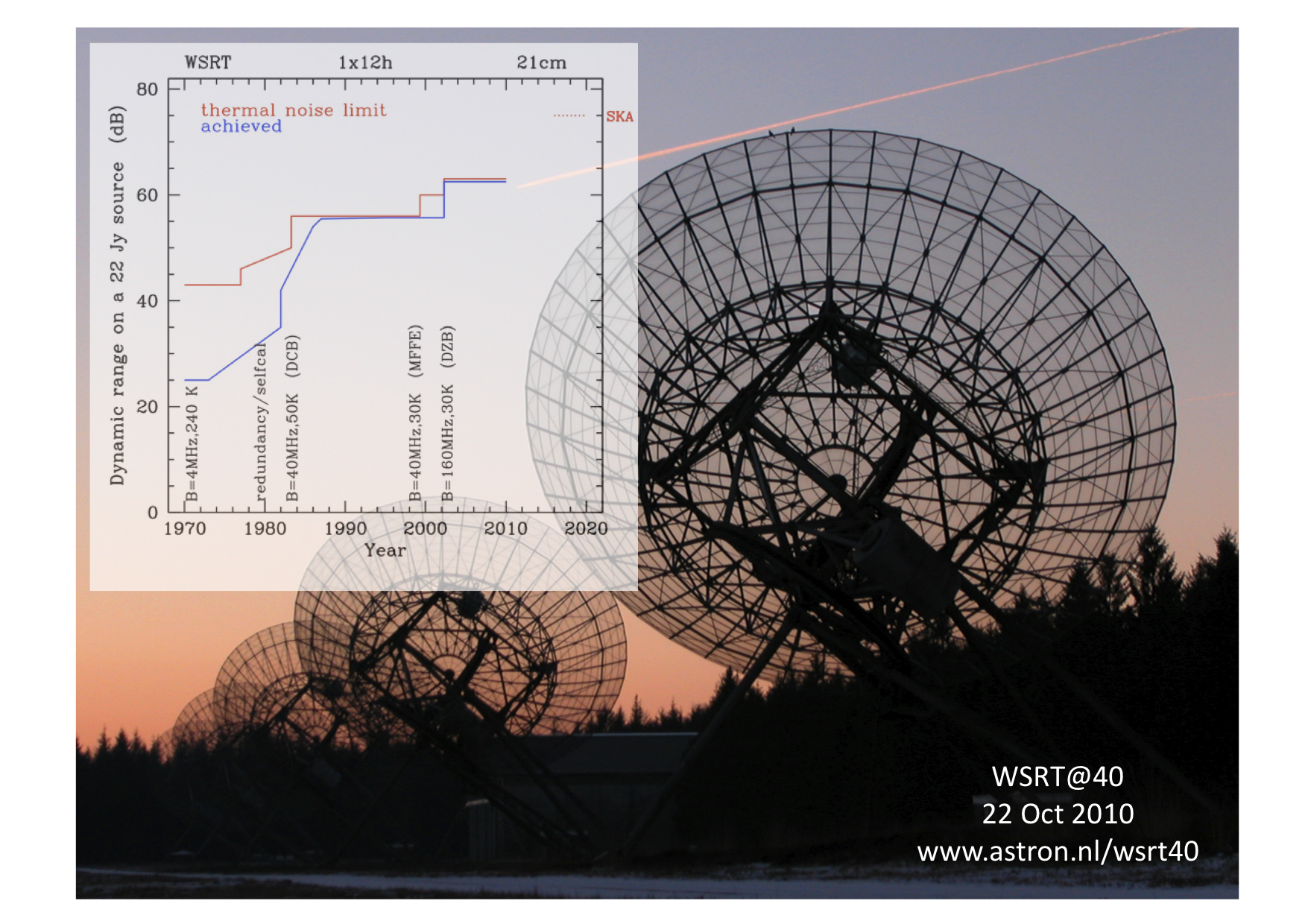Daily Image
22-09-2010WSRT@40: a record of dynamic range
| Submitter: | Ger de Bruyn |
| Description: | This year, the Westerbork Synthesis Radio Telescope celebrates its 40th anniversary. This will be marked on the 22d of October 2010 with an on-site mini-symposium (see also /www.astron.nl/wsrt40). During the last 3 decades, the WSRT has held the "Blue Ribbon" of radio astronomy, i.e. the record dynamic range (DR). This takes on extra significance with the discussions about the DR that will be needed for noise-limited continuum observations with the Square Kilometre Array (SKA). The graph shows the DR that one could potentially achieve on a 22 Jy source using the WSRT in a 1x12h synthesis at a wavelength of 21cm. Note that 22 Jy happens to be the peak flux of three well-known sources: 3C84, 3C147 and 3C295. The red line indicates the theoretical DR (in dB, i.e. on a log scale!), calculated by dividing 22 Jy by the thermal noise level at each epoch. Noticeable jumps in sensitivity occurred in 1977 (with the addition of two more telescopes and the installation of cooled receivers in the movable telescopes), with the completion of the Digital Continuum Backend (DCB) in 1983, with the completion of the Multi Frequency Front Ends (MFFE) in 1999, and with the completion of the 160 MHz Digital Backend (DZB) in 2002. The blue line shows the actually achieved DR in WSRT images. Large improvements were realized in the early 1980's by redundant baseline calibration (the WSRT version of selfcal, see Noordam & de Bruyn, Nature, 1982), and in 2003. For a summary of the latter and earlier results we refer to De Bruyn, Bos, van Someren Greve & Brouw (2010, in preparation). All DR values refer to bright dominant on-axis sources. Recently, this has been extended to off-axis DR by solving for direction dependent effects (DDE's), as has been demonstrated in several AJDI's by Smirnov (see also Noordam & Smirnov, 2010, A&A in press). The graph suggests that the software to calibrate the data quickly rose to the challenge whenever a more sensitive receiver/backend became available on the WSRT. The current DR record for a single 12h stands at 1,500,000:1. An image made from 3x12h on 3C147 reaches a DR of 2,500,000:1. It has been estimated (Dewdney, 2010) that the SKA will require a typical DR of about 75 dB for thermal noise-limited observations. Some would conclude from this graph that, if SKA's nanoJy sensitivity were available today, we would also be able to deliver the required DR. |
| Copyright: | ASTRON |
| Tweet |  |
